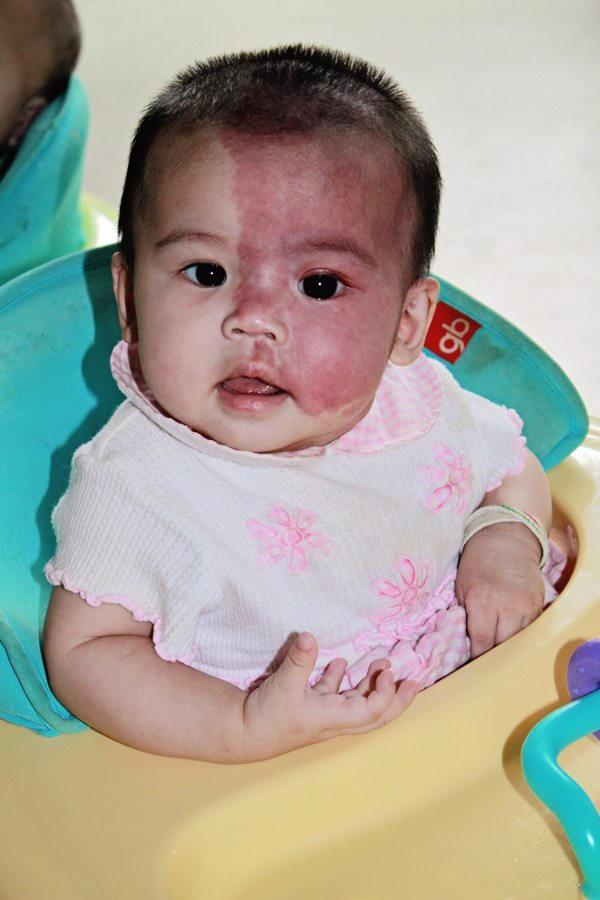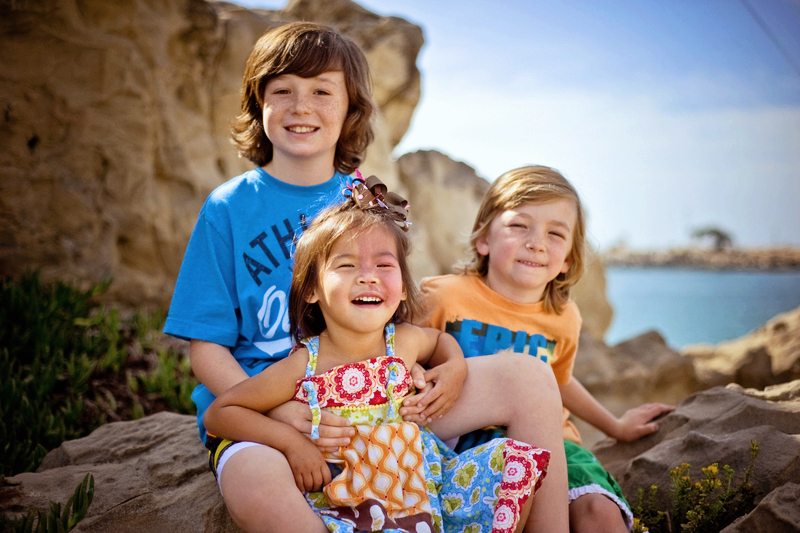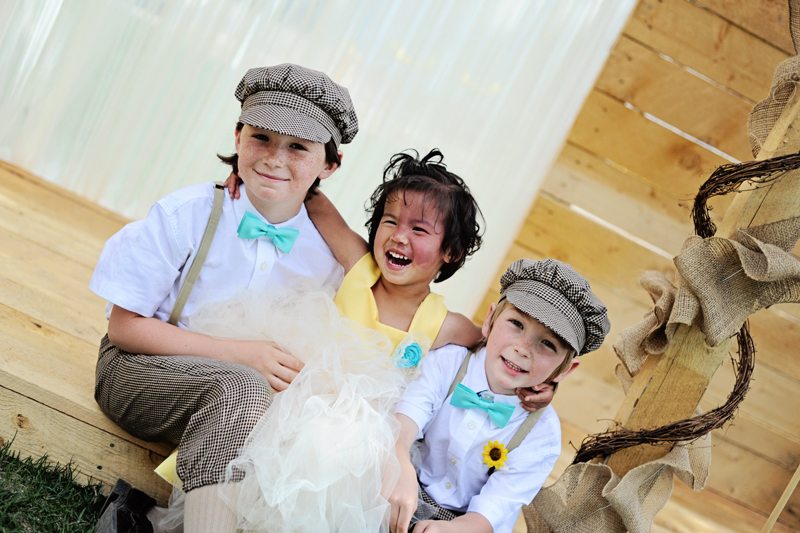“You can’t direct the wind but you can adjust your sails.” – Unknown
No truer words have I ever read that bring home the reality of our daughter’s diagnosis. Our adoption journey is a story in itself, and best for another time. We have had several wise friends point out that the complications of even getting her home were just to prepare us for the fight ahead.
My purpose today is to help advocate and provide knowledge for another family that may go down a similar road as the one we chose. I don’t want to scare people off with the hard truths of our daughter’s diagnosis. You see, we know that her diagnosis is just a small piece of who she truly is. So I will save the part of who she truly is until the very end. As they say, let’s save the best for last!
Here goes, oh and hold on tight, it really is quite the adventure! We tried to prepare ourselves about her condition, we tried to ask questions, and we (ok me, my husband is much more relaxed about such things) obsessed with trying to learn everything and I mean everything. We knew that we would never be prepared. We knew that each child is different and each child’s medical report is different.
Our daughter was originally diagnosed in China with Sturge Weber. That is what we researched. We had several doctors review her file and I remember getting a call after we had committed from a doctor that had some concerns. I will never forget the words she spoke.
“I need to just tell you that personally I would not bring her home. You have to realize that one day the girl you know will be gone. She may go to sleep and wake a completely different child or she may not wake at all.”
After hanging up I remember sobbing. Not for a decision we had already made – I knew in my heart we were going to continue to move forward. I sobbed because I was scared that I would not be the mom this little girl needed. What if I failed her and made the wrong decisions medically? What if …. What if…. What if… ?
Well, fast forward to bringing her home, our little funny and silly bundle of energy. We had a lot of medical issues and a lot of scares in the first couple months. We experienced a lot of back and forth on what she had, and what she didn’t have. She has Sturge Weber. Then she did not have Sturge Weber. It was a whirlwind. We were angry, frustrated and just wanted answers. I won’t bore you with all the details but just sorting out the medical and trying to determine which specialist even understood her condition became so time-consuming and, truth be told, exhausting.
Corina gave us a few very good scares. In China we had been told she never had seizures and was not on glaucoma medication. After coming home she started experiencing stroke-like episodes. She would lose control of her left side. She would drool and not be able to walk. The longest episode lasted days. I still remember her first appointment with a neurologist and we found ourselves being whisked along hallways and told that we needed to have an emergency cerebral angiogram based off of the results from her MRI.
A neurosurgeon then reviewed the results and his recommendation was “Just treat her like a little girl and enjoy your time.” While I did not disagree with treating her like a little girl and just enjoying her, I did disagree with the attitude that seemed to say this is as good as it gets. Oh, nuh uh, I think the doctor missed that I am one determined momma! The doctors have since told us that she most likely had been having episodes like this in China. Corina was placed in our arms with a severe case of strep throat. We have learned that fevers or sickness can wreak havoc on her system and very possibly started her into a downward spiral. My heart breaks to think that she was never held during times like this.
This is what we now know. That we have to push our fear aside. That we are her parents and she is our daughter. And we will fight to the end to make sure we find the right specialist and that we build a team of doctors knowledgeable in her condition. We have learned that Corina was not mis-diagnosed in China, but some of her medical was just flat out missed and it added to the confusion of a correct diagnosis. We have also learned that with the help of a genetic specialist we are now working at building her medical team and that part of that is working with specialist outside our state that specialize in Vascular Anomalies. Currently we are working at putting into place a supportive care plan that will encompass her vast medical needs so that if or when she has complications we will know the next step.
…..
Below are explanations of her two separate Diagnoses. Within each diagnosis are other areas that our Corina deals with daily. Corina was diagnosed with Bilateral Sturge-Weber (this means in Corina’s case the Sturge Weber does affect her entire brain) and Klippel Trenaunay Syndrome.
Sturge-Weber Syndrome: (source) Sturge-Weber Syndrome is a congenital disorder of unknown incidence and cause. It is characterized by a congenital facial birthmark and neurological abnormalities.
Facial Birthmark – The most apparent indication of Sturge-Weber Syndrome is a facial birthmark or “Port Wine Stain” present at birth and typically involving at least one upper eyelid and the forehead. Much variation in the size of the stain has been reported and may be limited to one side of the face or may involve both sides. The birthmark, varying from light pink to deep purple, is due to an overabundance of capillaries just beneath the surface of the involved skin. In rare instances, there is an absence of a Port Wine Birthmark.
Neurological Abnormalities – Neurological concerns relate to the development of excessive blood vessel growth on the surface of the brain (angiomas). These are located typically on the back (occipital) region of the brain on the same side as the port wine birthmark. These angiomas create abnormal conditions for brain function in the region. Seizure activity is the most common early problem. The convulsions usually appear on the opposite side of the body from the Port Wine Stain and vary in severity. A weakening or loss of the use of one side of the body (hemiparesis), may develop opposite to the port wine stain. Developmental delay of motor and cognitive skills may also occur to varying degrees.
Other Manifestations – Increased pressure within the eye (glaucoma) is another condition which can be present at birth or develop later. The incidence of glaucoma in patients with Sturge-Weber is approximately 70% and 40% for choroidal lesions. The glaucoma is usually restricted to the eye which has the stain involvement. Enlarging of the eye (buphthalmos) can also occur in the eye which has been affected by the stain.
Klippel-Trenaunay Syndrome: (source) Klippel-Trenaunay Syndrome (congenital dysplastic angiopathy) is a congenital vascular disorder of unknown cause. Klippel-Trenaunay (KT) is characterized by a triad of symptoms: Port Wine Birthmark (capillary malformation) covering one or more limbs, congenital vascular anomalies, usually venous varicosities, absence or duplication of a venous structure, malformation and hypertrophy (enlargement of the limb) or atrophy (withering or smaller limb). KTS involves the lower limbs in approximately 90% of the cases. In rare instances there is an absence of Port Wine Birthmark and not all three symptoms need to be present for the syndrome to exist. Each case of KT is different, with patients having varying symptoms and severity. Symptoms associated with KT can include internal organ involvement, hematuria (blood in the urine) rectal bleeding, vaginal bleeding and cellulitis (infection within the skin) Bleeding from the affected limb is also common. Patients may have problems including anemia, coagulation problems (blood clots) and platelet trapping in the affected limb. Some patients can develop a very serious clotting abnormality called DIC (disseminated intravascular coagulation). Seizures are also associated with KT. There have been reports of learning disorders and KT in some patients. Most patients report pain in the affected limb.
…..
This may all sound overwhelming. I can’t lie, some days it is. But Corina is not overwhelming. (Well, some days she is when she is really really busy and I am really really tired!) The overwhelming comes from loving this little girl until my heart feels like it may break. It comes from hoping that someone somewhere has seen a similar case and will be able to help guide us. Corina has some extra complex vascular abnormalities deep inside her brain that are not what the doctors feel they would typically see with her condition.
We have learned to just take each day and you truly treasure it. Corina has not just one rare disorder but several. And so do lots of other adorable kiddos out in this great big world. So how has our life changed with her medical needs? Again I can’t lie, I don’t want to. Anyone considering adoption and considering this special need deserves honesty. We searched for these same answers. We met amazing families who also adopted children with Corina’s diagnosis of Sturge Weber.
We now know how much sickness can affect her and what to watch for. We know that sleep, too much sugar or not having a routine can completely throw her off. We know that OT and PT have made a difference with her. We know that a stroke or seizure could hit at any time. We worry about missing her medications. We worry that too much heat or too much cold will trigger another episode. We know that the bilateral Sturge Weber has caused calcifications (hardening of her brain) throughout her brain and as she gets older we will understand more what parts this may be affecting with her development and cognition. We know that sometimes we lose touch with family and friends because we are in survival mode.
We know that most days are truly good days. Most days are full of her sunshine and laughter. Most days are the kids all playing and fighting together! Good days far outweigh the bad days. We know all of this.
And knowing this, would we have made a different choice? Absolutely not! We look into her beautiful eyes each morning and we know we are so lucky to be called mom and dad. We watch her look in the mirror every morning before school and she will turn and say, “I am beautiful!” as she takes off to find her brothers and have them tell her how pretty she looks. Yup, we are the lucky ones.
I will leave you with one last thought and quote. When we traveled to China my husband found a single sprout growing from a crack in a concrete wall. Everything around it was literally cement. We took a picture of it as it was beautiful. Everyone around us passed by it and did not give it a thought. This reminded me so much of Corina’s life. How did her spirit thrive and stay so strong amid such a harsh reality? Some very wise friends sent me a quote from the movie Mulan and it fit perfectly with that sprout picture – as well as the picture of Corina’s life and her future:
“The flower that blooms in adversity is the rarest and most beautiful of all.” – Mulan
– guest post by Kirsten




























Kristen,
You have shared your heart, a heart that is obviously FULL of love for your child, so beautifully. I am so thankful that you listened to that heart…and not the doctor…and brought Corina home!
Blessings to you,
Kristi
We are currently adopting our daughter who also has bilateral SWS. She has been with us since birth and is now 8 years old. She experienced a left functional hemispherectomy 5 years ago due to intractable seizures. She is my heart and my life. Thank you for sharing your beautiful story.